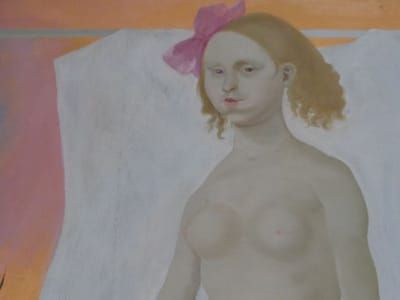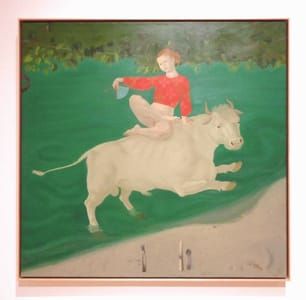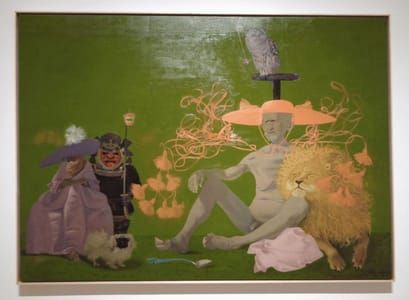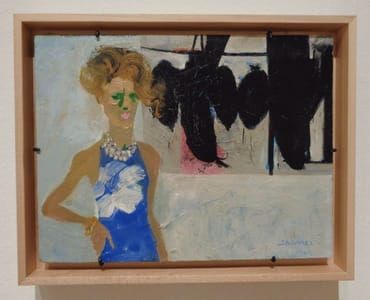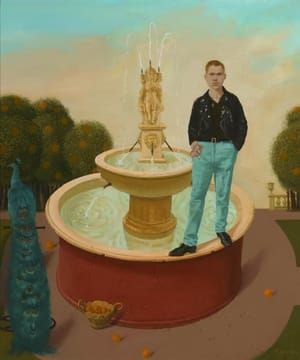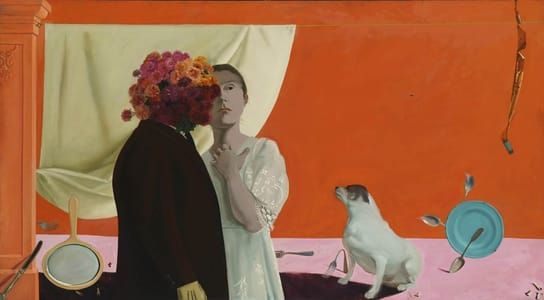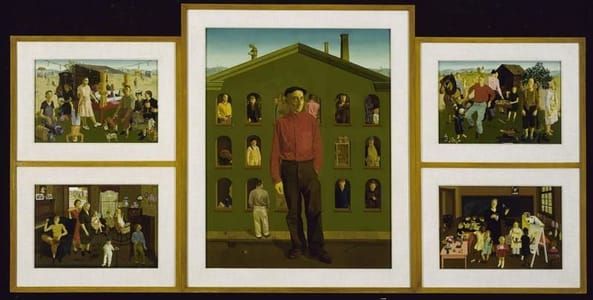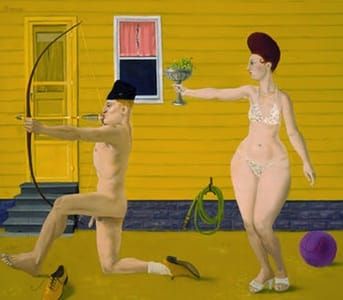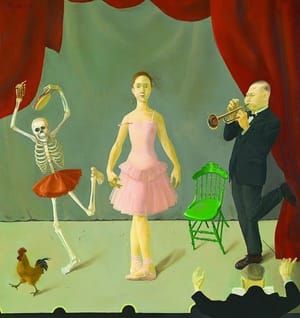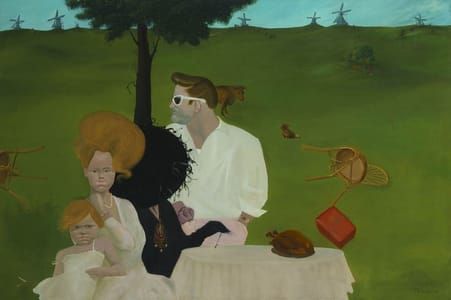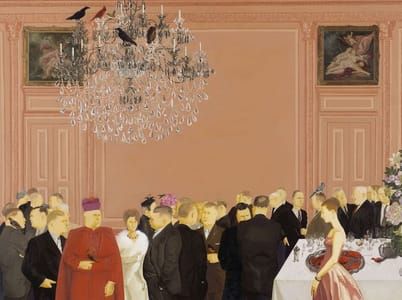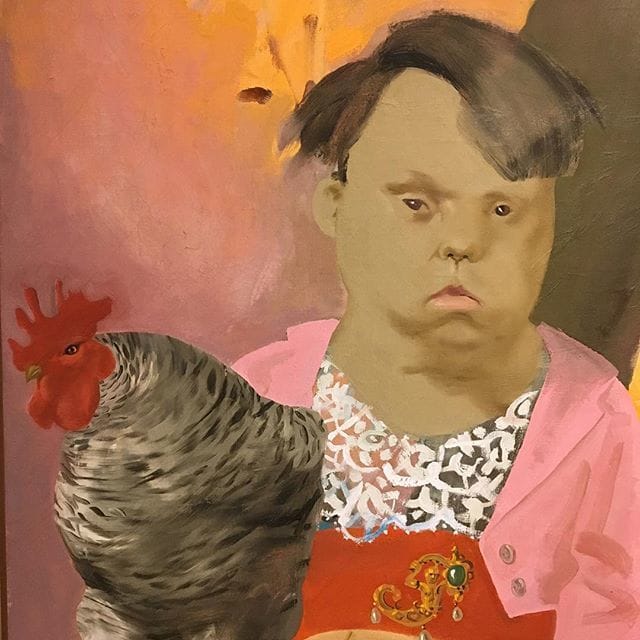

Leda and the Dwarf, 1960
Honoré Sharrer
...There is no "story" in the painting. During the time it was painted, abstract expressionism was popular. Sharrer decided that she would turn reality around, as the abstract expressionists did, but in her own fashion. She placed the woman on the horse backwards. The other items in the painting? "Some are personal. Sharrer loves painting metal and jewelry. Thus, both are in the painting. A picture in a newspaper of a farmer, standing in an impoverished yet fruitful field and holding a chicken, inspired the dwarf (though the figure is from Velazquez). The tea set? Just a happy, dancing teapot she had in her childhood. She had it set on a milking stool at the opening of her show in NYC. The pin? Personal. Didn't you ever (in your youth or otherwise) have anything held up by a safety pin? Sharrer is a realist painter, almost photographic. Her juxtapositions are the confusing element in her paintings.
[http://joankyanni.blogspot.nl/2013/02/leada-and-dwarf.html]
...The artist referred to her naked, satisfyingly-sized women as ‘liberated’. It tends to be the clothed women, no matter how skimpy their clothing, who are not free, autonomous human beings.
[https://vindevie.me/2017/08/29/honore-sharrer/]
At the onset of the 1960s, Sharrer adopted some Pop art elements in her work, while continuing to cultivate her surreal subject matter. At this point, a clear visual vocabulary emerges: lap dogs, melting cutlery, lit cigarettes, and cuts of meat form a recurring motif of dreamlike symbolism, in landscapes inhabited by circus folk, mythical creatures (Leda, of swan fame, is a regular), solemn children, and round-faced, nude, frankly unapologetic women who gaze directly at the viewer.
...her later work — which seems only to gain layers of refinement, both in terms of style and acerbic, absurdist humor — offer activities that get at this depth. One table offers a copy of a painting rendered in jigsaw puzzle form, a perfect medium for Sharrer’s thoroughly packed images. Standing before it, I mused that the time it would take to assemble the 750-piece puzzle seemed about as long as would be necessary to get a grasp on the work itself. The hours Sharrer spent on each painting seem to transfer directly to the viewing experience.
[https://hyperallergic.com/371227/discovering-honore-sharrer-an-eclipsed-20th-century-surrealist-painter/]
Uploaded on Dec 17, 2017 by Suzan Hamer
Honoré Sharrer
artistArthur
Wait what?

